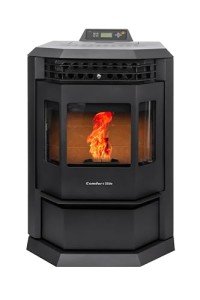Freestanding stoves, also known as standalone stoves, are an increasingly popular choice for homeowners looking to boost the heating efficiency and aesthetic appeal of their living spaces. They come in a myriad of styles, sizes, and fuel choices, supplying flexibility to meet the varied requirements of customers. This post explores numerous aspects of freestanding stoves, including their advantages, types, and functions, in addition to a guide to buying the right range.
A Freestanding Stoves For Sale (34.236.28.152) range is a heating appliance that is not developed into a wall or kitchen cabinetry. Rather, it stands separately in a room and can be put in numerous places, making it a flexible heating solution. These stoves can use various fuels, such as wood, gas, or pellets, and are developed to supply warmth while boosting the atmosphere of an area.
Freestanding stoves are preferred for a number of reasons:
Freestanding stoves been available in different types based upon their fuel source, including:
| Type | Description |
|---|---|
| Wood Stoves | Use traditional wood logs for fuel, providing a rustic appeal and a distinct atmosphere. |
| Gas Stoves | Run using natural gas or lp, offering hassle-free and manageable heating. |
| Pellet Stoves | Utilize compressed wood pellets as fuel, understood for their efficiency and eco-friendliness. |
| Electric Stoves | Usage electrical energy as a source of power, offered in various designs, frequently including modern styles. |
When looking for a freestanding range, a number of functions need to be taken into account:
When considering buying a freestanding stove, it is necessary to assess a number of crucial elements to guarantee you invest carefully:
Setting a clear spending plan is important when looking for a freestanding range. Costs can differ extensively based on the type, brand name, and features:
Thorough research can help you discover various choices in the market. Some noteworthy brands in the freestanding range market consist of:
Check out client evaluations and professional ratings online to gain insights into the performance and reliability of various designs.
Check regional building regulations and regulations regarding range setup, specifically for wood and gas stoves, to guarantee compliance.
Consider professional installation, specifically for gas or wood designs, as they often need unique ventilation or flue systems.
Yes, when effectively set up and maintained, freestanding stoves are safe. Nevertheless, it's necessary to follow the maker's standards and local codes.

Regular upkeep consists of cleaning the flue or chimney, inspecting for obstructions, and making sure all elements are working properly. Annual inspections by a qualified technician are recommended.
Yes, many house owners utilize freestanding stoves as primary heating sources, particularly in locations where traditional heating may be restricted.

Numerous more recent models are created for high efficiency, offering better heat retention and lower emissions compared to older models.
With correct maintenance, the average life-span of a high-quality freestanding range can be around 15 to 20 years.
Freestanding stoves are a practical and stylish choice for heating homes. By comprehending the numerous types, advantages, and features offered, house owners can make informed decisions that match their choices and heating needs. Whether going with a wood, gas, pellet, or electric range, buying a quality model will supply heat, ambiance, and fulfillment for lots of years to come.
No Data Found!

